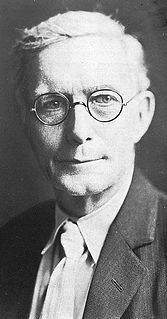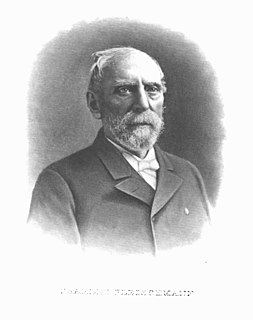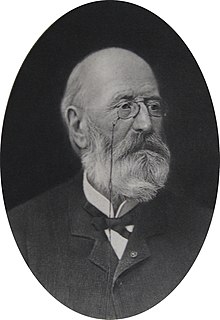
A crayon is a stick of pigmented wax used for writing or drawing. Wax crayons differ from pastels, in which the pigment is mixed with a dry binder such as gum arabic, and from oil pastels, where the binder is a mixture of wax and oil.

The Centennial International Exhibition of 1876, the first official World's Fair to be held in the United States, was held in Philadelphia, Pennsylvania, from May 10 to November 10, 1876, to celebrate the 100th anniversary of the signing of the Declaration of Independence in Philadelphia. Officially named the International Exhibition of Arts, Manufactures, and Products of the Soil and Mine, it was held in Fairmount Park along the Schuylkill River on fairgrounds designed by Herman J. Schwarzmann. Nearly 10 million visitors attended the exposition, and 37 countries participated in it.

Andrew Newell Wyeth was an American visual artist, primarily a realist painter, working predominantly in a regionalist style. He was one of the best-known U.S. artists of the middle 20th century.

Newell Convers Wyeth, known as N. C. Wyeth, was an American artist and illustrator. He was the pupil of artist Howard Pyle and became one of America's greatest illustrators. During his lifetime, Wyeth created more than 3,000 paintings and illustrated 112 books — 25 of them for Scribner's, the Scribner Classics, which is the body of work for which he is best known. The first of these, Treasure Island, was one of his masterpieces and the proceeds paid for his studio. Wyeth was a realist painter at a time when the camera and photography began to compete with his craft. Sometimes seen as melodramatic, his illustrations were designed to be understood quickly. Wyeth, who was both a painter and an illustrator, understood the difference, and said in 1908, "Painting and illustration cannot be mixed—one cannot merge from one into the other."

Crane Co. is an American industrial products company based in Stamford, Connecticut. Founded by Richard Teller Crane in 1855, it became one of the leading manufacturers of bathroom fixtures in the United States, until 1990, when that division was sold off. In 1960 it began the process of becoming a holding company with a diverse portfolio. Its business segments are Aerospace & Electronics, Engineered Materials, Payment and Merchandising Technology, Fluid Handling, and Controls. Industries served by these segments include chemical industries, commercial construction, food and beverage, general and commercial aviation, and power generation.

Xavier Martínez was a California artist active in the late 19th and early 20th century. He was a well-known bohemian figure in San Francisco, the East Bay, and the Monterey Peninsula and one of the co-founders of two California artists' organizations and an art gallery. He painted in a tonalist style and also produced monotypes, etchings, and silverpoint.

The Golden Gate International Exposition (GGIE), held at San Francisco's Treasure Island, was a World's Fair celebrating, among other things, the city's two newly built bridges. The San Francisco–Oakland Bay Bridge opened in 1936 and the Golden Gate Bridge in 1937. The exposition opened from February 18, 1939, through October 29, 1939, and from May 25, 1940, through September 29, 1940.

Disston Saw Works was an American company owned by Henry Disston that manufactured handsaws during the mid-19th to early 20th century in the Tacony neighborhood of Philadelphia. The company was initially named Keystone Saw Works and then Henry Disston & Sons, Inc. A successor corporation, Disston Precision is still operational in Philadelphia.

David Howard Hitchcock was an American painter of the Volcano School, known for his depictions of Hawaii.

Charles Louis Fleischmann was a Hungarian-American manufacturer of yeast who founded Fleischmann Yeast Company.

William Seltzer Rice was an American woodblock print artist, art educator and author, associated with the Arts and Crafts movement in Northern California.

Arthur Jerome Eddy was an American lawyer, author, art collector, and a prominent member of the first generation of American Modern art collectors. His book Cubists and Post-Impressionism was the first American book promoting these new art movements and the work of Wassily Kandinsky. Eddy's collection was distinguished by the inclusion of German expressionists and Wassily Kandinsky.
Arthur Nahl was a German-born artist, daguerreotyper, engraver, portraitist, and landscape painter. Nahl was a painter known for his American Old West paintings of California. He was considered one of California's finest engravers, and was ranked amongst the best gymnasts in California for his time.

George Hetzel was a French-born American artist. He is regarded as the founder of the Scalp Level School of painting, a contemporary to the French Barbizon School of Naturalist painting. He is associated with the Düsseldorf school of painting.

Emaux de Briare is a French company specializing today in mosaics. Whilst the manufactory in Briare originally started with earthenware pottery, the factory founded in Paris by Jean-Félix Bapterosses (1813–1885) initially began manufacturing porcelain buttons in 1845. They merged in 1851, at which date its international development started: 1851 in The Great Exhibition, UK and as early as 1853 in the United States.

William Herman Rau was an American photographer, active primarily in the latter half of the 19th and early 20th centuries. He is best remembered for his stereo cards of sites around the world, and for his panoramic photographs of sites along the Pennsylvania Railroad. He was official photographer of the St. Louis World's Fair in 1904, and of the Lewis and Clark Centennial Exposition in Portland in 1905. His work is now included in the collections of the Smithsonian Institution and the Getty Museum.

William H. Bell was an English-born American photographer, active primarily in the latter half of the 19th century. He is best remembered for his photographs documenting war-time diseases and combat injuries, many of which were published in the medical book, Medical and Surgical History of the War of the Rebellion, as well as for his photographs of western landscapes taken as part of the Wheeler expedition in 1872. In his later years, he wrote articles on the dry plate process and other techniques for various photography journals.

John Moran was a pioneering American photographer and artist. Moran was a prominent landscape, architectural, astronomical and expedition photographer whose career began in the Philadelphia, Pennsylvania area during the 1860s.

Frederick William Weber was a chemist, artist, columnist and businessman from Philadelphia, Pennsylvania. An expert on the chemistry and physics of paint materials, Weber served as treasurer, technical director and eventually president of F. Weber & Company, Inc., an artists’ supplies manufacturer founded in 1853. Weber developed new techniques for the manufacture of inks and pigments, and played a major role in the introduction of synthetic resins to the paint-making process.

















